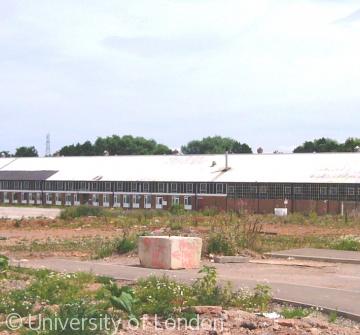The Somerset Heritage Centre

The Somerset Heritage Centre was built in 2010 on a huge brownfield site in the Silk Mills area of Taunton in the parish of Norton Fitzwarren. The site is bounded by the main West Country railway line on the south, the present main Taunton to Wiveliscombe and Bampton road on the north, the Back Brook on the east and the former Taunton Cider Works, now being redeveloped for housing, on the west.
Until the 20th century this was a largely agricultural area but the Back Brook, ancient boundary between the parishes of Norton Fitzwarren west and Staplegrove east was an ideal source of power for mills. Flowing down from the Quantocks hills and fed by many tributaries it has a good flow of water even in draught stricken 2010.
The best known mill on the watercourse was the Back Brook silk mill later the Staplegrove factory, which despite many changes of use, was popularly known as the silk mills, and gave that name to the adjoining road and the area around. The name survives although the mill buildings were demolished and the site now lies under the embankment of the new line of the Silk Mills Road.
The fields west of the mill site continued in agricultural use until the Second World War when they were cleared and levelled to create the largest military supply depot in South-West England. It took only two months to build and was known as 3 Supply Depot when in the care of the RASC, later the Royal Army Ordnance Corps. In 1942 it became the American Army’s G 50. It had its own railway sidings as did a smaller depot east of the Silk Mills Road and now the site of Bindon Road business and retail parks. Other depots and camps were situated to the north around Courtlands House and Norton Manor including a prisoner of war camp. Some of those properties still belong to the Ministry of Defence notably Norton Manor Camp, home of 40 Commando of the Royal Marines.
Following the closure of the supply depot in 1966 its buildings were used as a trading estate, the enormous sheds, some of them triple units, providing cheap warehousing and storage for buses and lorries. In the early 21st century pressure for redevelopment led to the destruction and clearance of most of the site to create a large business and trading estate, c. 500 new homes, green areas and a new road system to bypass Norton Fitzwarren. By 2010 only about four wartime stores survived and a few other structures. One of the earliest new arrivals on the site was the Somerset Heritage Centre built on the site of the depot's railway sidings.
Content derived from research undertaken as part of the Victoria County History project










